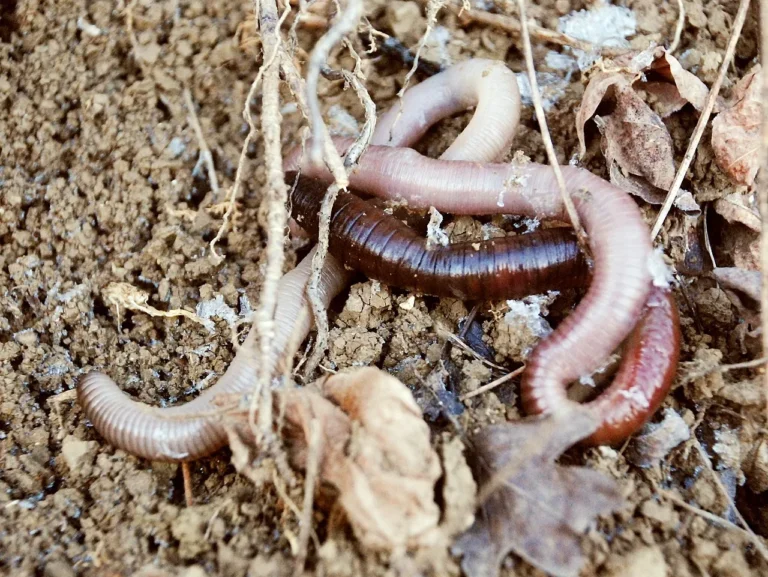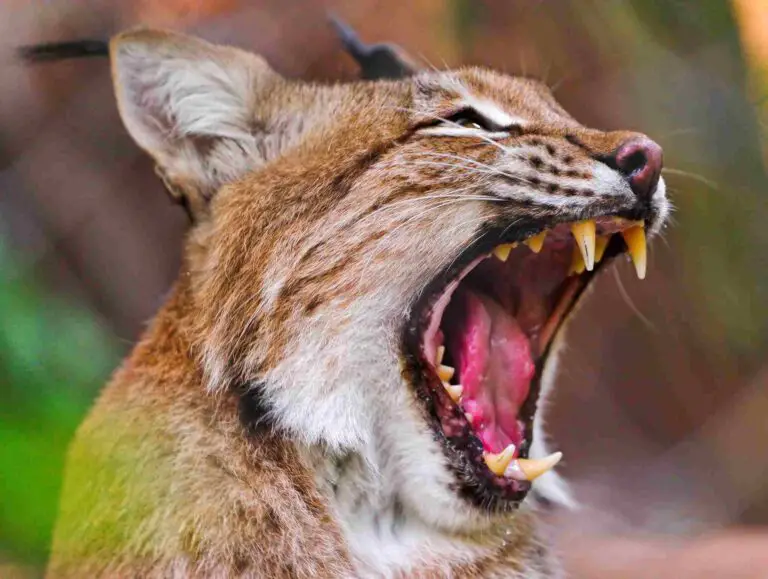Gerbil Vs Hamster Vs Guinea Pig Size, Weight, Overall Comparison
When considering gerbils, hamsters, and guinea pigs as potential pets, recognizing the differences in their nocturnal behavior, size, sociability, and overall cost aids in making an informed decision tailored to individual preferences.
I. Nocturnal Behavior:
– Hamsters are nocturnal, primarily active during the night. Gerbils, while not strictly nocturnal, may display activity both during the day and night. Guinea pigs, on the other hand, are unique, not strictly adhering to nocturnal or diurnal patterns, requiring less sleep than hamsters and gerbils.
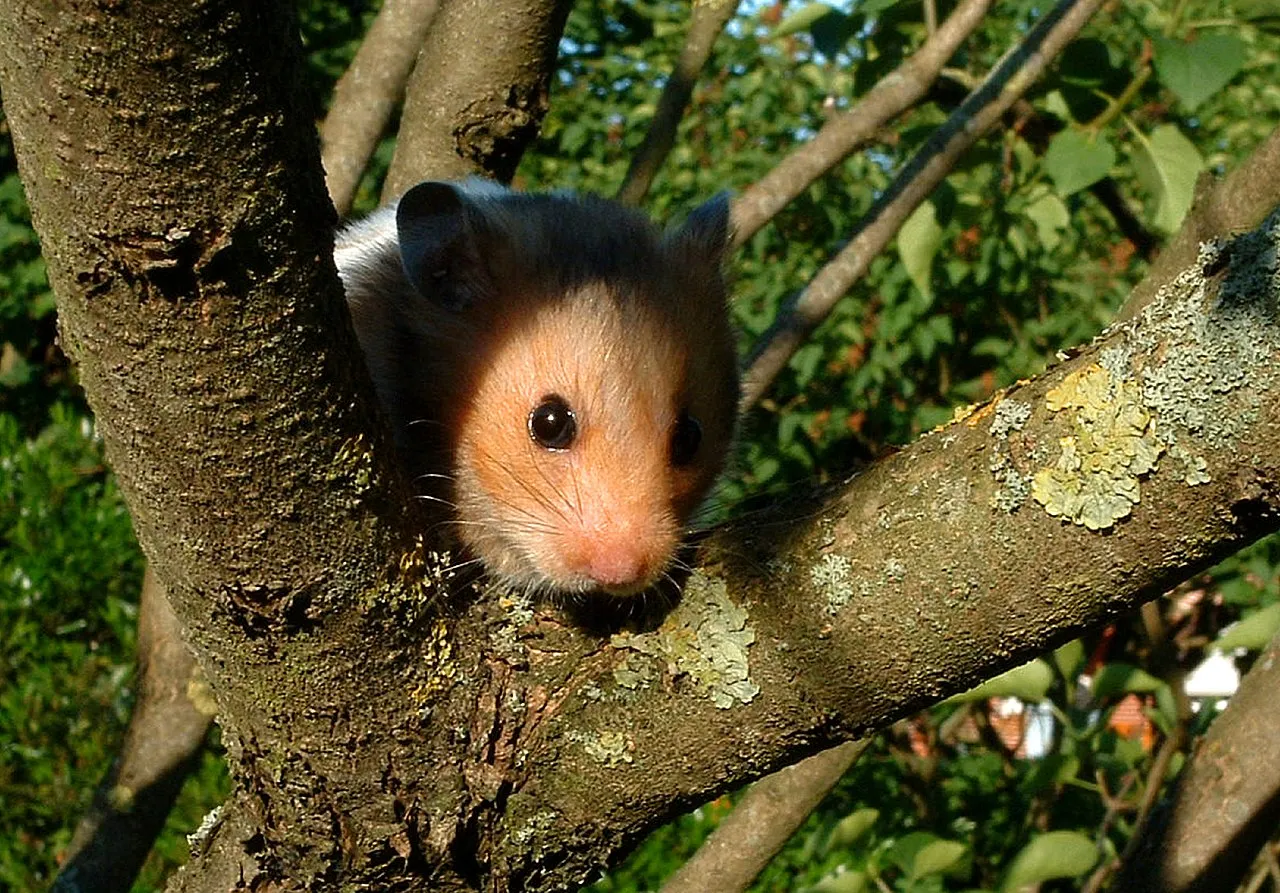
II. Size:
– Guinea pigs stand out as the largest among these rodents, surpassing both hamsters and gerbils in size. Understanding the varying sizes contributes to assessing the space requirements and handling preferences based on individual preferences.
III. Sociability:
– Gerbils are social animals, thriving in pairs or groups, making them an ideal choice for those seeking interactive pets. Guinea pigs, known for their sociable nature, also benefit from companionship. Hamsters, while affectionate, might not display the same level of social interaction, making them suitable for those desiring more independent pets.
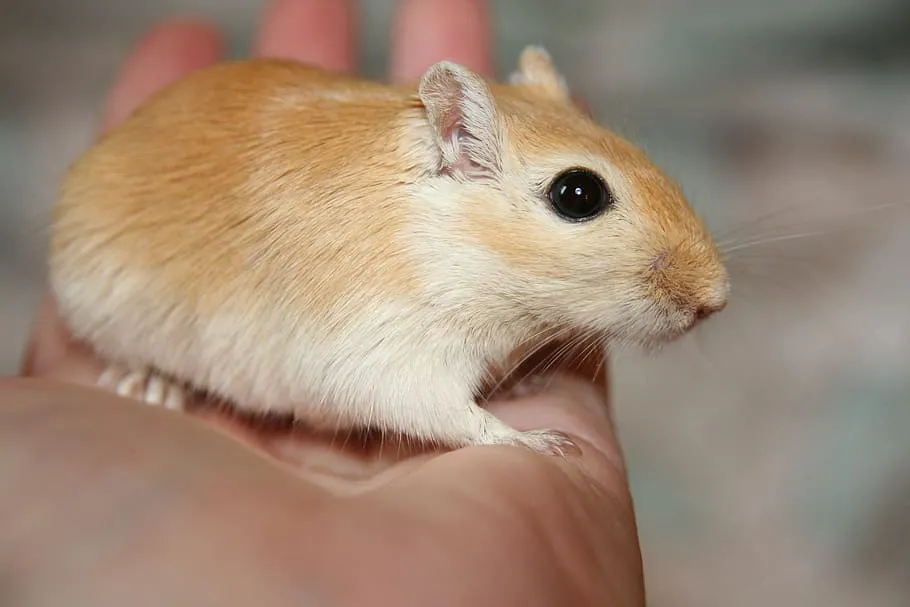
IV. Overall Cost:
– Gerbils are considered cost-effective, but expenses increase with the number of gerbils, as they are social animals requiring companionship. Guinea pigs can be more expensive due to factors like cage size, food, and bedding. Assessing the overall cost helps in budgeting for the pet’s care.
*Details of Comparison
| Criteria | Gerbil | Hamster | Guinea Pig |
| Taxonomy | Rodentia, Muridae, Gerbillinae | Rodentia, Cricetidae, Cricetinae |
Rodentia, Caviidae, Caviinae
|
| Appearance | Sleek, slender, long tail | Compact, stout, short tail |
Larger, stocky, short legs
|
| Size | 6-12 inches | 2-7 inches | 8-10 inches tall |
| Weight | 60-130 grams | 20-150 grams | 700-1200 grams |
| Dentition and Bite Force (PSI) | Moderate bite force, incisors for gnawing | Strong bite, adapted for burrowing |
Large incisors, herbivorous bite force
|
| Physical Offensive Advantages | Speed and agility | Strong bite, burrowing |
Size may provide defensive advantage
|
| Physical Defensive Advantages | Burrowing, agility | Burrowing, defensive aggression |
Vocalizations, hiding
|
| Speed | Up to 10 mph | 4-8 mph | Below 5 mph |
| Agility | Highly agile, sharp turns | Agile, especially in burrows | Moderate agility |
| Senses | Well-developed hearing, smell, good vision | Sensitive hearing, poor eyesight, keen smell |
Excellent hearing, smell, average eyesight
|
| Overall Physical Capacity | Balanced, speed, agility | Specialized for burrowing, strong bite |
Robust build, moderate speed, agility
|
| Habitat Preference(s) and Geographic Region | Arid and semi-arid regions | Varied habitats, grasslands |
South American grasslands
|
| Tracks | Distinct tracks, hop and drag marks | Tracks with tail drags, reflecting burrowing | Hoof-like prints |
| Lifespan | 2-4 years | 2-3 years | 5-7 years |
| Mode of Feeding | Omnivorous | Omnivorous | Herbivorous |
| Intelligence | Problem-solving, quick learning | Limited problem-solving, instinct-driven |
Socially intelligent
|
| Social Behavior | Social, prefer living in groups | Mostly solitary, territorial |
Highly social, thrive in pairs/groups
|
| Mode of Reproduction | Polyestrous, short gestation, litters | Seasonal breeders, shorter gestation |
Continuous breeders, longer gestation
|
| Parental Behavior | Both parents care for offspring | Mothers primarily care for young |
Both parents involved in nurturing
|
| Proximity to Human-Inhabited Areas | Adaptable to human settlements | May inhabit areas near agriculture |
Domesticated, found in households
|
| Behavior Toward Humans | Curious but skittish | Varied, some tolerate handling |
Generally social and comfortable
|
| Danger Posed to Humans | Minimal danger, potential for bites if provoked | Minimal danger, bites not severe |
Minimal danger, rarely bites
|
| Associated Precautions | Gentle handling, avoiding sudden movements | Caution when reaching into cages |
Regular health checks, proper handling
|
| Conservation Status | Generally not a concern | Some species considered threatened |
Domesticated varieties common, wild populations stable
|
Key Points
- Gerbils, hamsters, and guinea pigs have distinct taxonomic classifications within the order Rodentia.
- They vary in appearance, size, and weight, with guinea pigs being larger and heavier.
- Dentition and bite force differ based on dietary preferences.
- Physical offensive and defensive advantages, speed, and agility are adapted to their respective ecological niches.
- Senses and overall physical capacities show species-specific adaptations.
- Habitat preferences range from arid regions to grasslands, influencing their tracks and ecological roles.
- Lifespan, reproductive strategies, and parental behavior contribute to their population dynamics.
- Social behaviors differ, with gerbils and guinea pigs being more social than hamsters.
- Domestication and adaptability to human-inhabited areas vary among the species.
- Guinea pigs are herbivorous, while gerbils and hamsters are omnivorous.
- Intelligence varies, with gerbils and guinea pigs displaying more cognitive flexibility.
- Precautions and behavior toward humans are influenced by their natural instincts.
- Conservation status varies, with some hamster species considered threatened.
- The summary highlights similarities and differences, emphasizing their unique ecological roles and adaptations.
1. Taxonomy:
Gerbil:
Order: Rodentia
Family: Muridae
Subfamily: Gerbillinae
Hamster:
Order: Rodentia
Family: Cricetidae
Subfamily: Cricetinae
Guinea Pig:
Order: Rodentia
Family: Caviidae
Subfamily: Caviinae
2. Appearance:
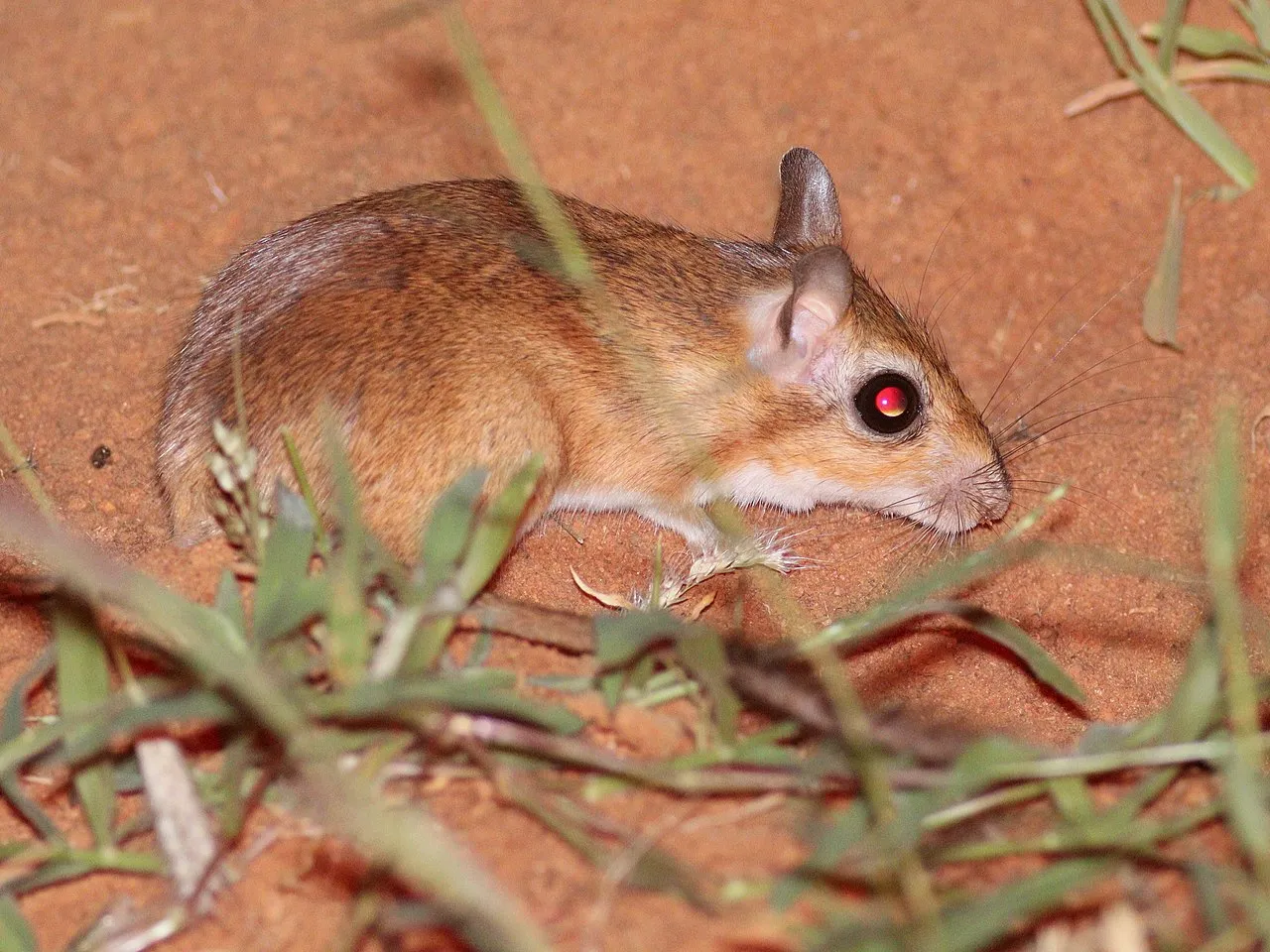
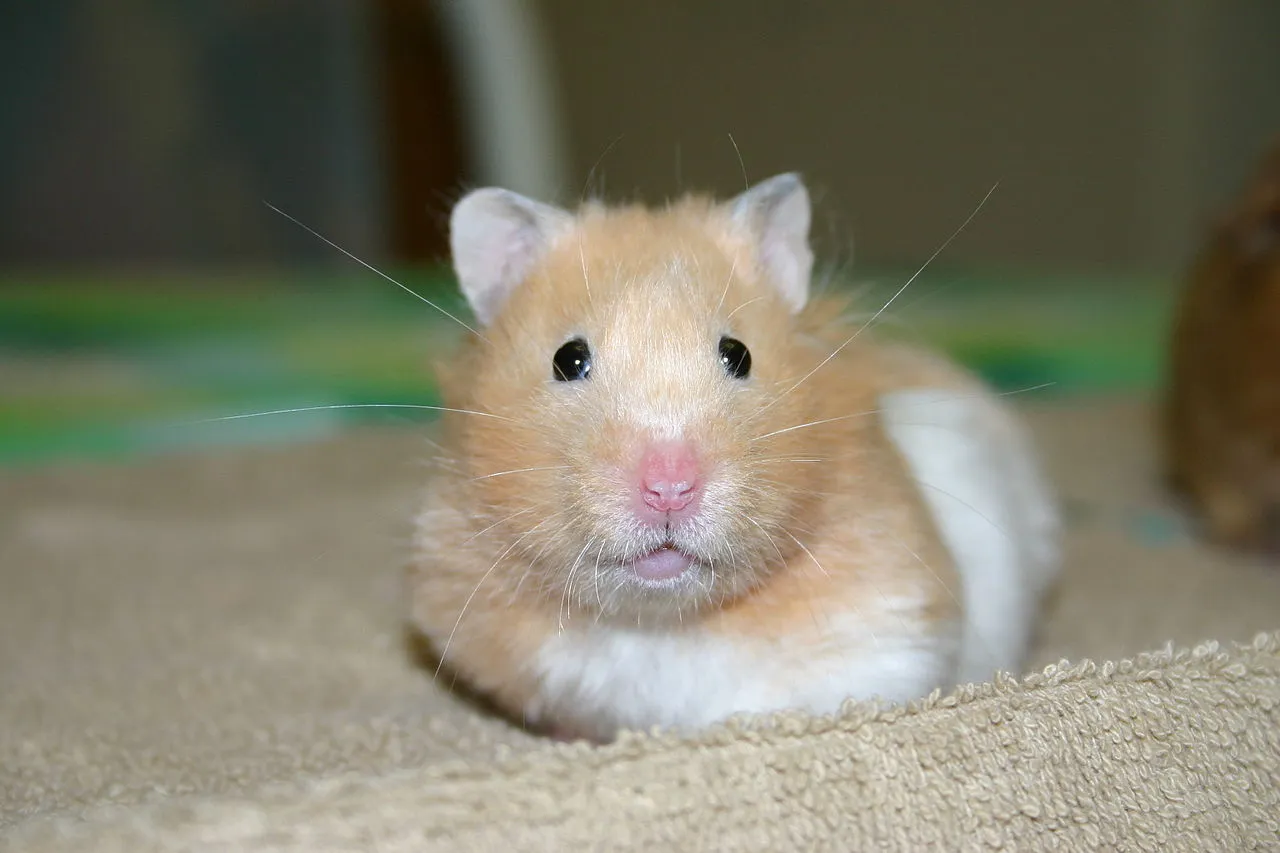
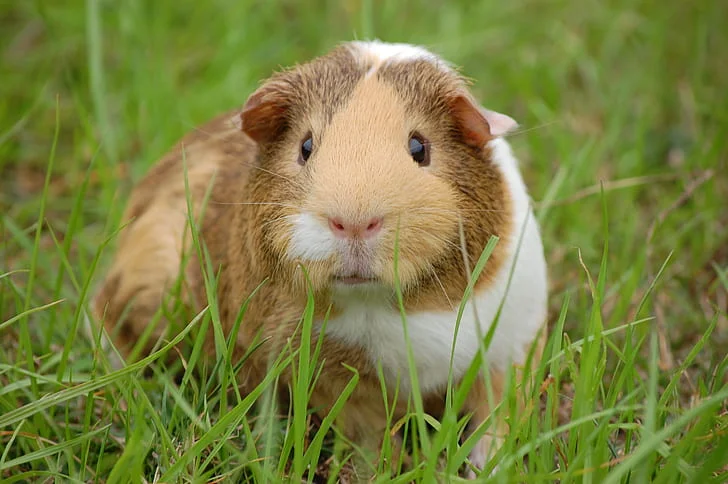
Gerbil:
Sleek, slender body with a long tail, large eyes, and pointed snout.
Hamster:
Compact, stout body with a short tail, small ears, and round face.
Guinea Pig:
Larger and more robust, with a stocky body, short legs, and a distinctive cavy face.
Comparison:
Gerbils are more streamlined, resembling small mice.
Hamsters have a characteristic rotund appearance.
Guinea Pigs exhibit a bulkier, cavy-like appearance.
Ecological Implications:
Gerbil’s sleek design aids in burrow navigation.
Hamster’s compact build suits underground burrowing.
Guinea Pig’s larger size may offer better insulation in colder habitats.
3. Size:
Gerbil:
Typically 6 to 12 inches in length.
Hamster:
Varies by species, ranging from 2 to 7 inches.
Guinea Pig:
Larger, averaging 8 to 10 inches tall.
Comparison:
Gerbils are mid-sized rodents.
Hamsters vary significantly in size among species.
Guinea Pigs are generally larger than both gerbils and hamsters.
Ecological Implications:
Size affects ecological niche and resource requirements.
Smaller size in gerbils may provide advantages in certain habitats.
Guinea Pigs’ larger size may confer protection against predators.
4. Weight:
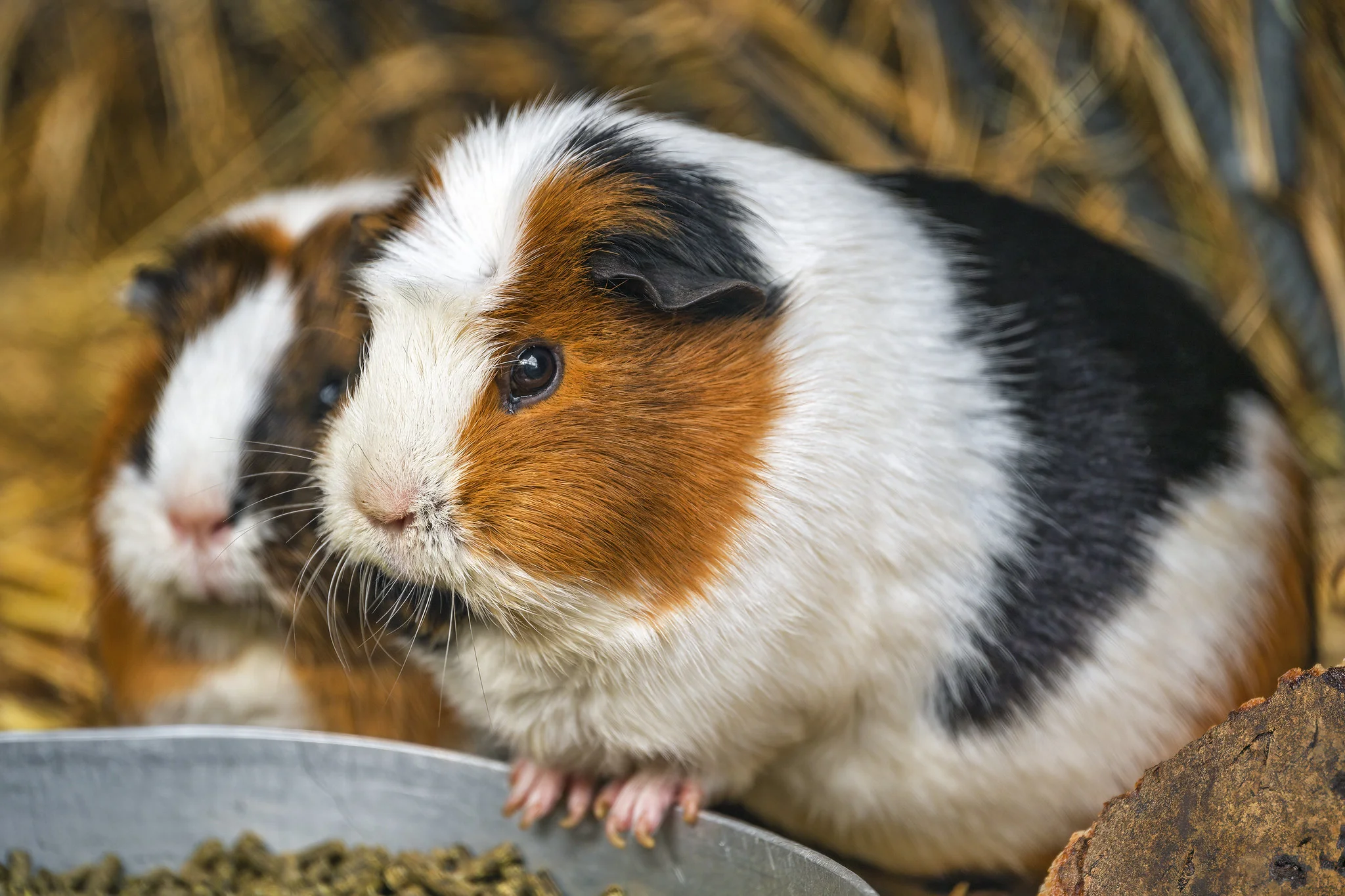
Gerbil:
Typically 60 to 130 grams.
Hamster:
Ranges from 20 to 150 grams depending on species.
Guinea Pig:
Heavier, averaging 700 to 1200 grams.
Comparison:
Gerbils are lightweight in comparison.
Hamsters have a wide weight range among species.
Guinea Pigs are substantially heavier than gerbils and hamsters.
Ecological Implications:
Weight influences energy requirements and predation risk.
Lighter gerbils may have advantages in terms of agility.
Guinea Pigs’ heavier build may contribute to better heat retention.
5. Dentition and Bite Force (PSI):
Gerbil:
Incisors for gnawing, bite force moderate.
Hamster:
Strong incisors, bite force adapted for burrowing.
Guinea Pig:
Large incisors, bite force sufficient for herbivorous diet.
Comparison:
Gerbil’s bite force is balanced for its omnivorous diet.
Hamsters possess strong bites for burrow construction and defense.
Guinea Pigs have adaptations for grinding plant material.
Ecological Implications:
Dentition reflects dietary specialization and ecological niche.
Bite force adaptations are essential for survival strategies.
Differences in bite force influence foraging and feeding behaviors.
6. Physical Offensive Advantages:
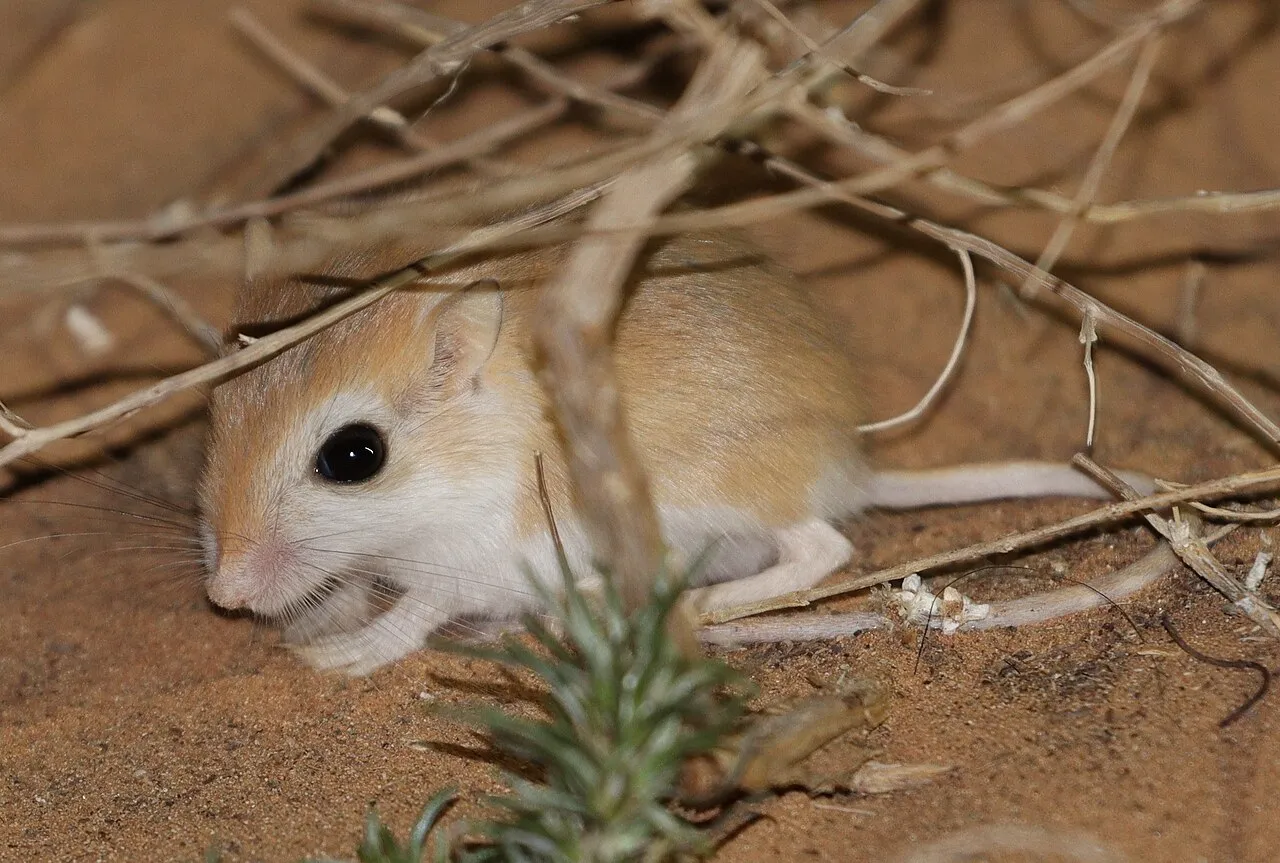
Gerbil:
Quick and agile, capable of darting movements.
Hamster:
Strong bite and burrowing ability for defense.
Guinea Pig:
Larger size may provide a defensive advantage.
Comparison:
Gerbils rely on speed and agility for offense.
Hamsters use a combination of strong bites and burrowing.
Guinea Pigs may use their size as a deterrent.
Ecological Implications:
Offensive strategies impact interactions within ecosystems.
Differences reflect adaptations to specific ecological roles.
7. Physical Defensive Advantages:
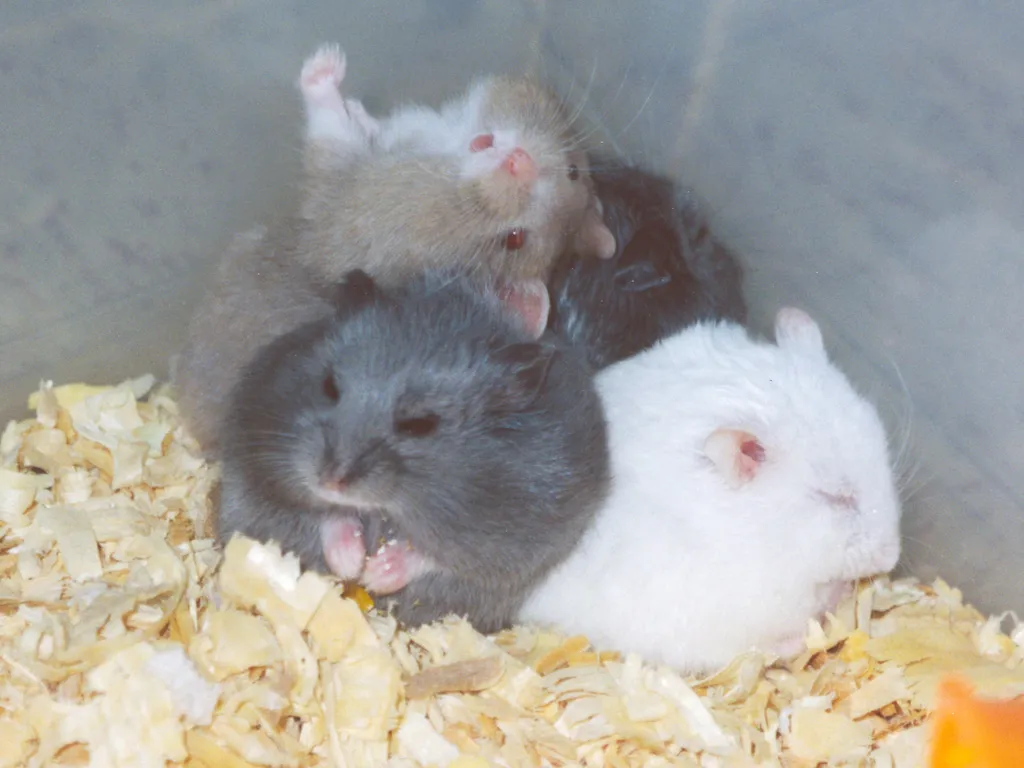
Gerbil:
Burrowing for escape, agility for evasion.
Hamster:
Retreat into burrows, may display defensive aggression.
Guinea Pig:
May use vocalizations and hiding as defensive tactics.
Comparison:
Gerbils and hamsters share burrowing as a common defense.
Guinea Pigs rely on vocal and behavioral cues for defense.
Ecological Implications:
Defensive mechanisms contribute to survival in diverse habitats.
Adaptations reflect the balance between predation and protection.
8. Speed (Km/hour or Mile/hour):
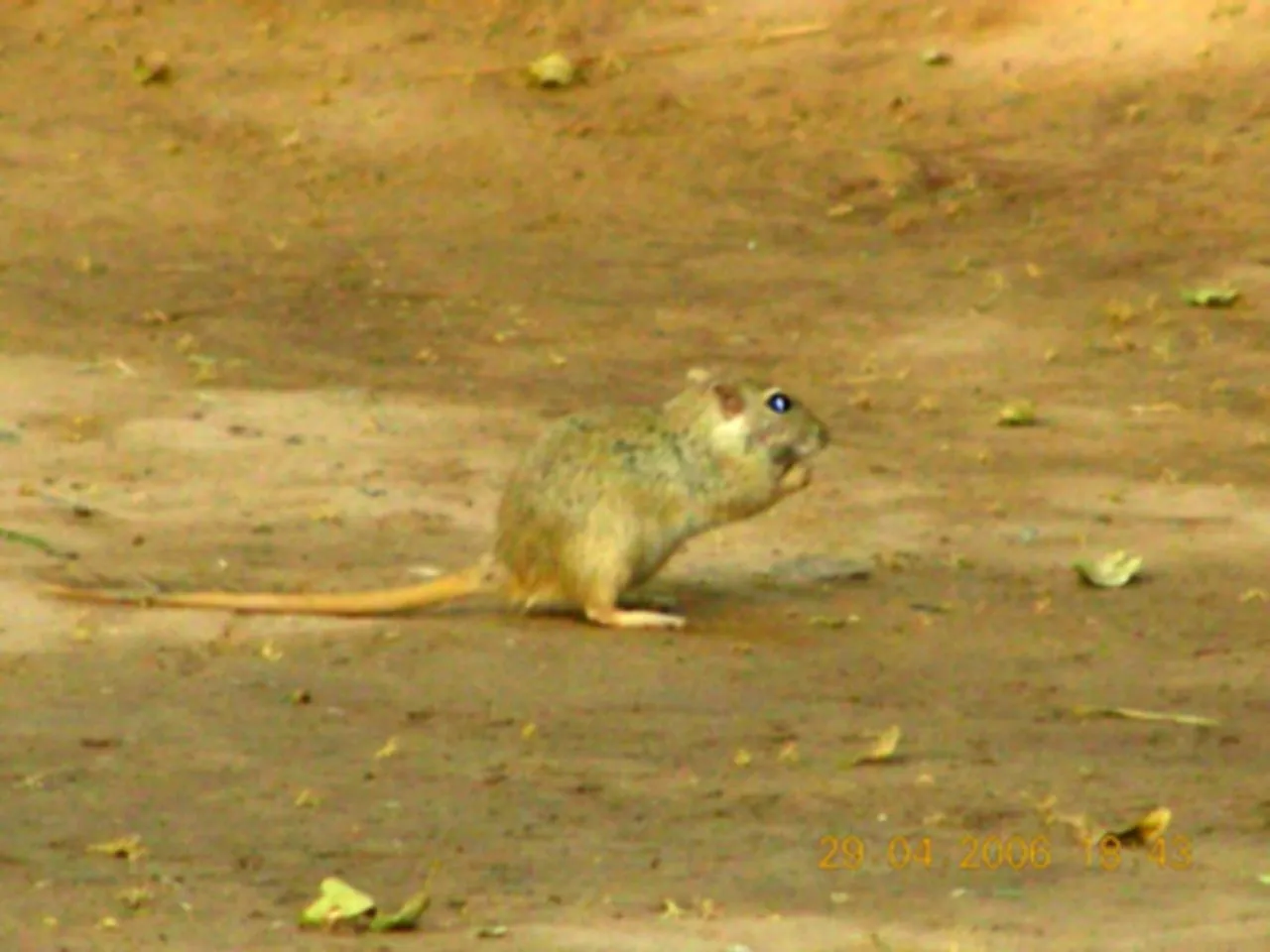
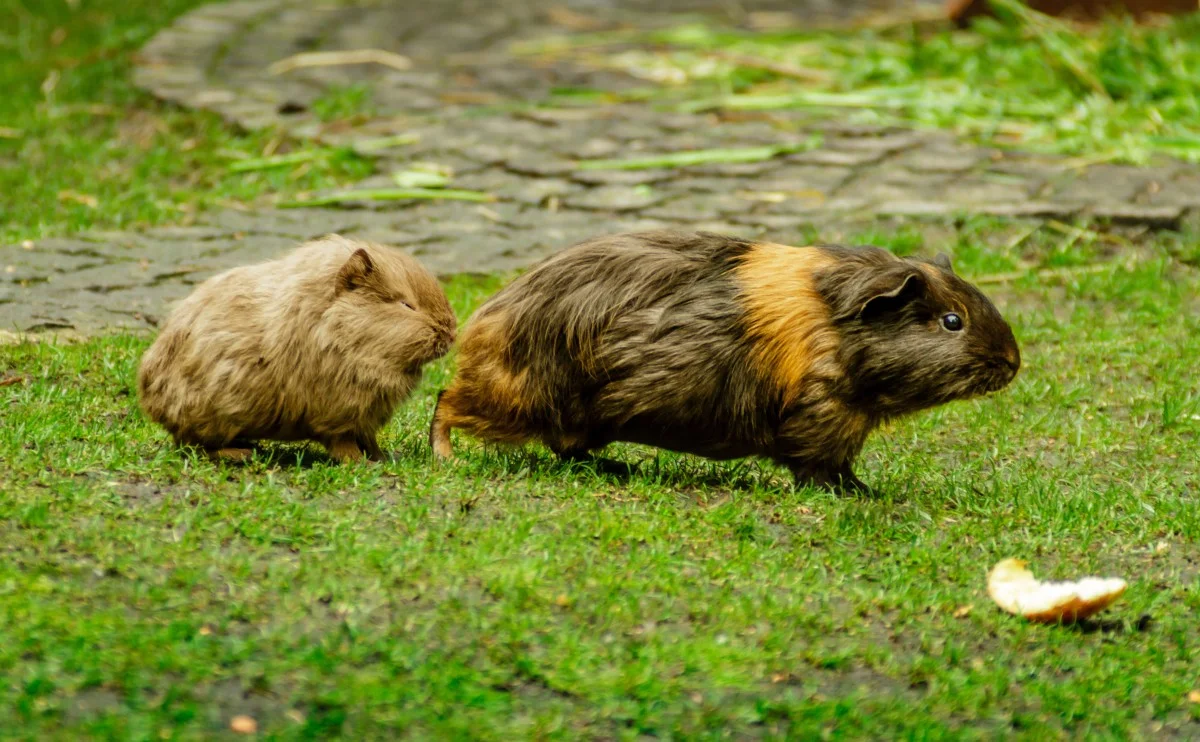
Gerbil:
Can reach speeds up to 10 miles per hour.
Hamster:
Runs at around 4 to 8 miles per hour.
Guinea Pig:
Moderate speed, usually below 5 miles per hour.
Comparison:
Gerbils are among the fastest small rodents.
Hamsters exhibit moderate running speeds.
Guinea Pigs are comparatively slower.
Ecological Implications:
Speed influences foraging efficiency and evasion from predators.
Differences in speed contribute to ecological niche separation.
9. Agility:
Gerbil:
Highly agile, capable of sharp turns and quick jumps.
Hamster:
Agile, especially in confined spaces like burrows.
Guinea Pig:
Less agile compared to gerbils, more steady movements.
Comparison:
Gerbils showcase exceptional agility for navigation.
Hamsters’ agility is tailored for subterranean environments.
Guinea Pigs exhibit a moderate level of agility.
Ecological Implications:
Agility is crucial for navigating specific habitats and evading predators.
Adaptations reflect the ecological challenges each species faces.
10. Senses:
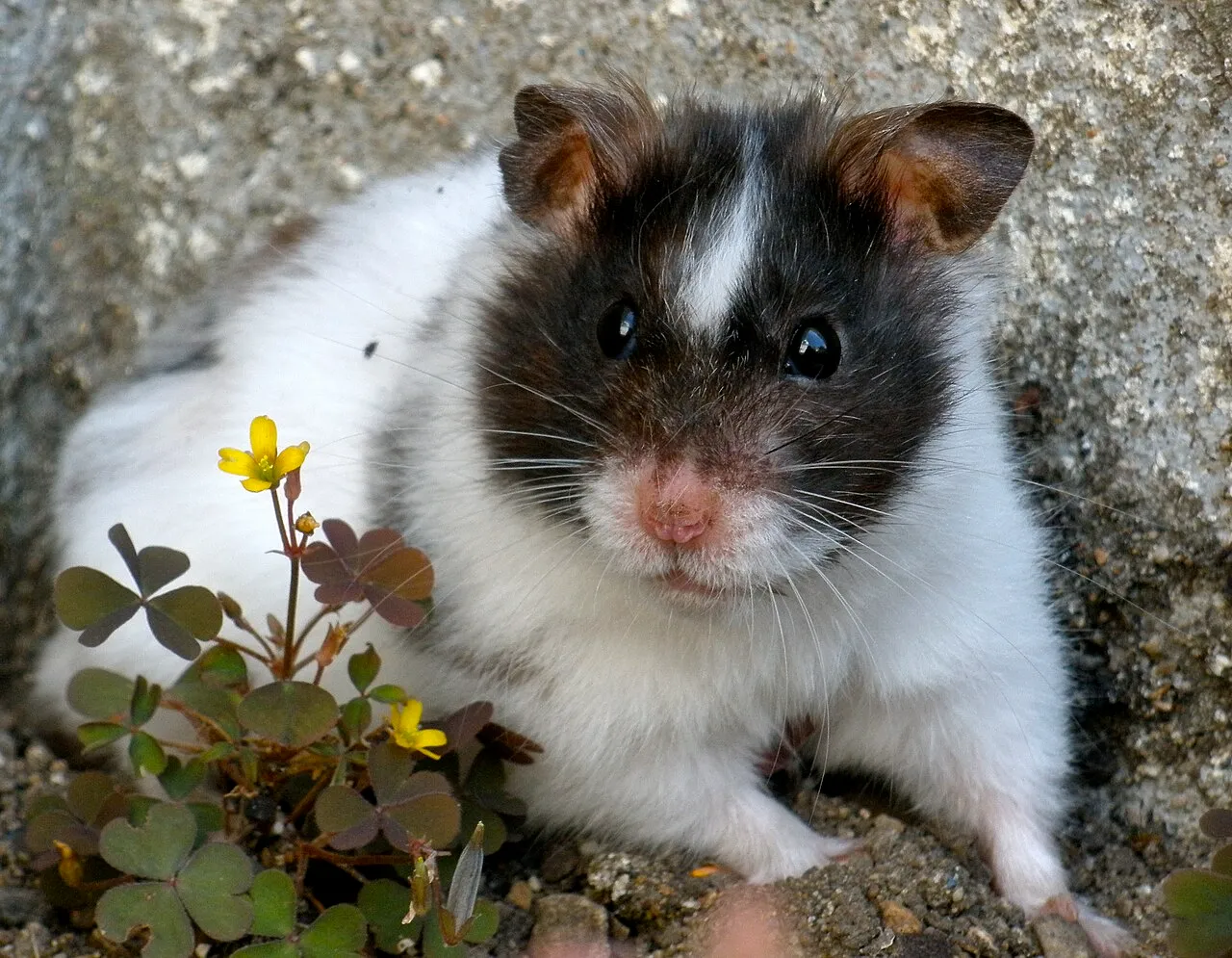
Gerbil:
Well-developed senses of hearing and smell, good vision.
Hamster:
Sensitive hearing, poor eyesight, keen sense of smell.
Guinea Pig:
Excellent sense of hearing and smell, average eyesight.
Comparison:
Gerbils rely on a combination of acute senses.
Hamsters compensate poor eyesight with heightened hearing and smell.
Guinea Pigs have a balance of sensory capabilities.
Ecological Implications:
Sensory adaptations aid in detecting predators, locating food, and social interactions.
Differences reflect the specific environmental challenges each species faces.
11. Overall Physical Capacity:
Gerbil:
Balanced physical abilities, emphasizing speed and agility.
Hamster:
Specialized for burrowing, strong bite, moderate agility.
Guinea Pig:
Robust build, moderate speed and agility.
Comparison:
Each species possesses a unique set of physical capacities.
Adaptations reflect the ecological roles and strategies for survival.
Ecological Implications:
Physical capacities shape the species’ ecological niche and role within the ecosystem.
Differences contribute to the coexistence and competition dynamics in their habitats.
12. Habitat Preference(s) and Geographic Region:
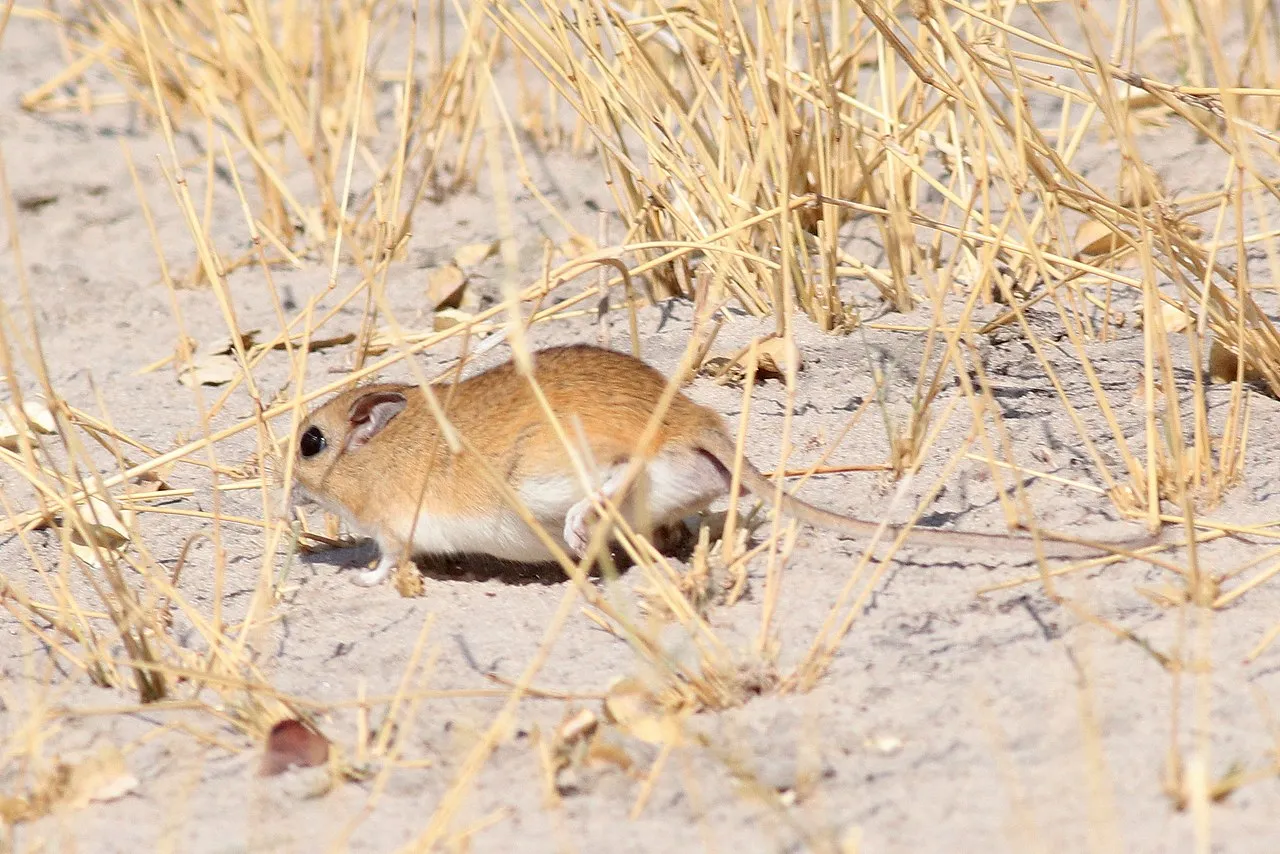
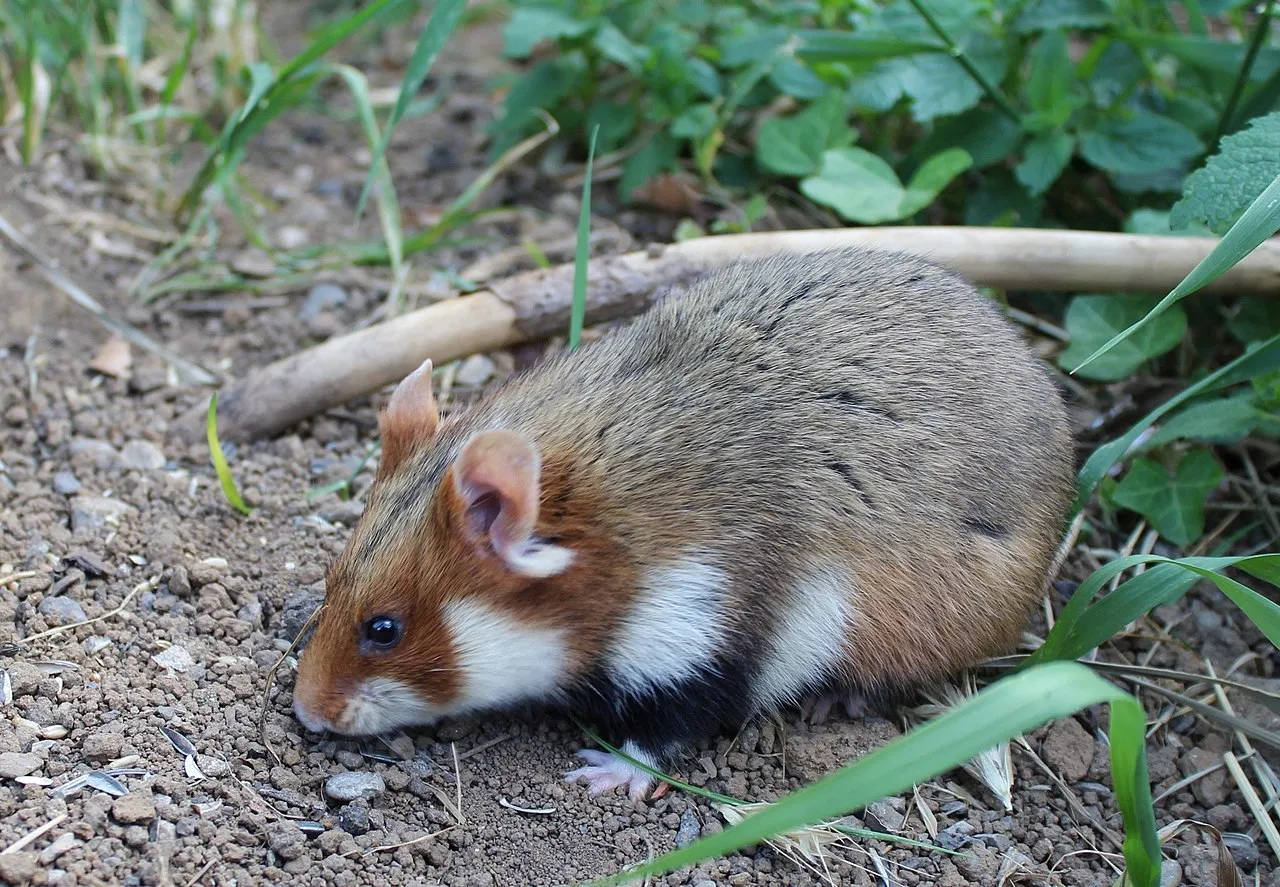
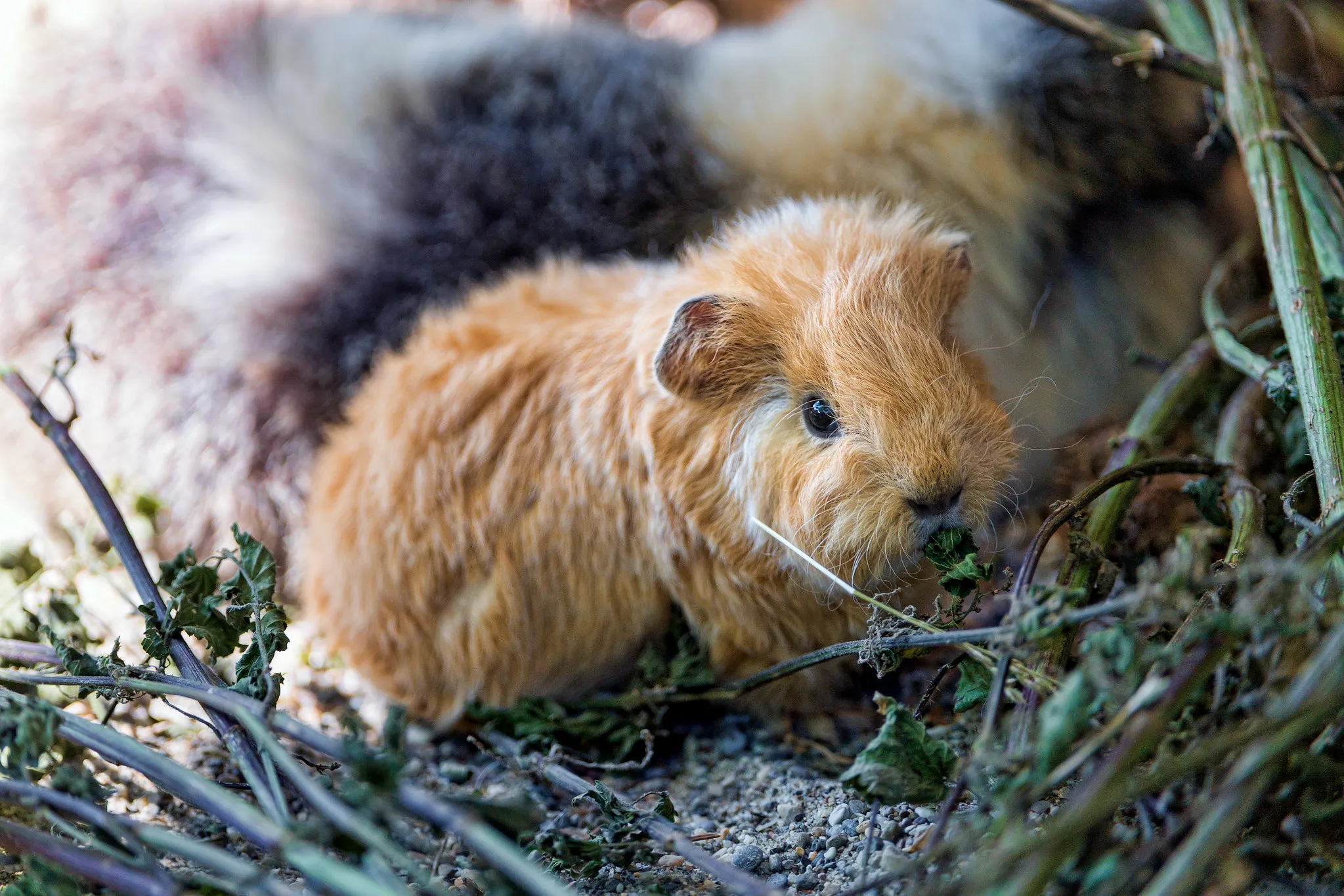
Gerbil:
Arid and semi-arid regions, preferring sandy soils.
Hamster:
Varied habitats, often grasslands, and agricultural fields.
Guinea Pig:
Grasslands and forest edges in South America.
Comparison:
Gerbils and hamsters show adaptability to diverse environments.
Guinea Pigs are native to specific regions in South America.
Ecological Implications:
Habitat preferences influence the species’ interactions with other flora and fauna.
Geographic distribution reflects adaptations to local environmental conditions.
13. Tracks:
Gerbil:
Distinct tracks, showing a combination of hop and drag marks.
Hamster:
Tracks often include tail drags, reflecting burrowing behavior.
Guinea Pig:
Tracks show clear marks of hoof-like prints.
Comparison:
Track patterns are influenced by locomotion styles and behaviors.
Guinea Pigs’ tracks are distinct due to their unique foot structure.
Ecological Implications:
Tracking provides insights into the species’ movement patterns and habitat utilization.
Differences in tracks contribute to understanding the ecological roles of each species.
14. Lifespan:
Gerbil:
Typically 2 to 4 years in captivity.
Hamster:
2 to 3 years, though species-specific variations exist.
Guinea Pig:
Averages 5 to 7 years but can live longer with proper care.
Comparison:
Gerbils and hamsters have relatively shorter lifespans.
Guinea Pigs generally live longer, requiring a longer-term commitment.
Ecological Implications:
Lifespan affects reproductive strategies and population dynamics in their respective ecosystems.
Variations in lifespan contribute to ecological resilience and stability.
15. Mode of Feeding:
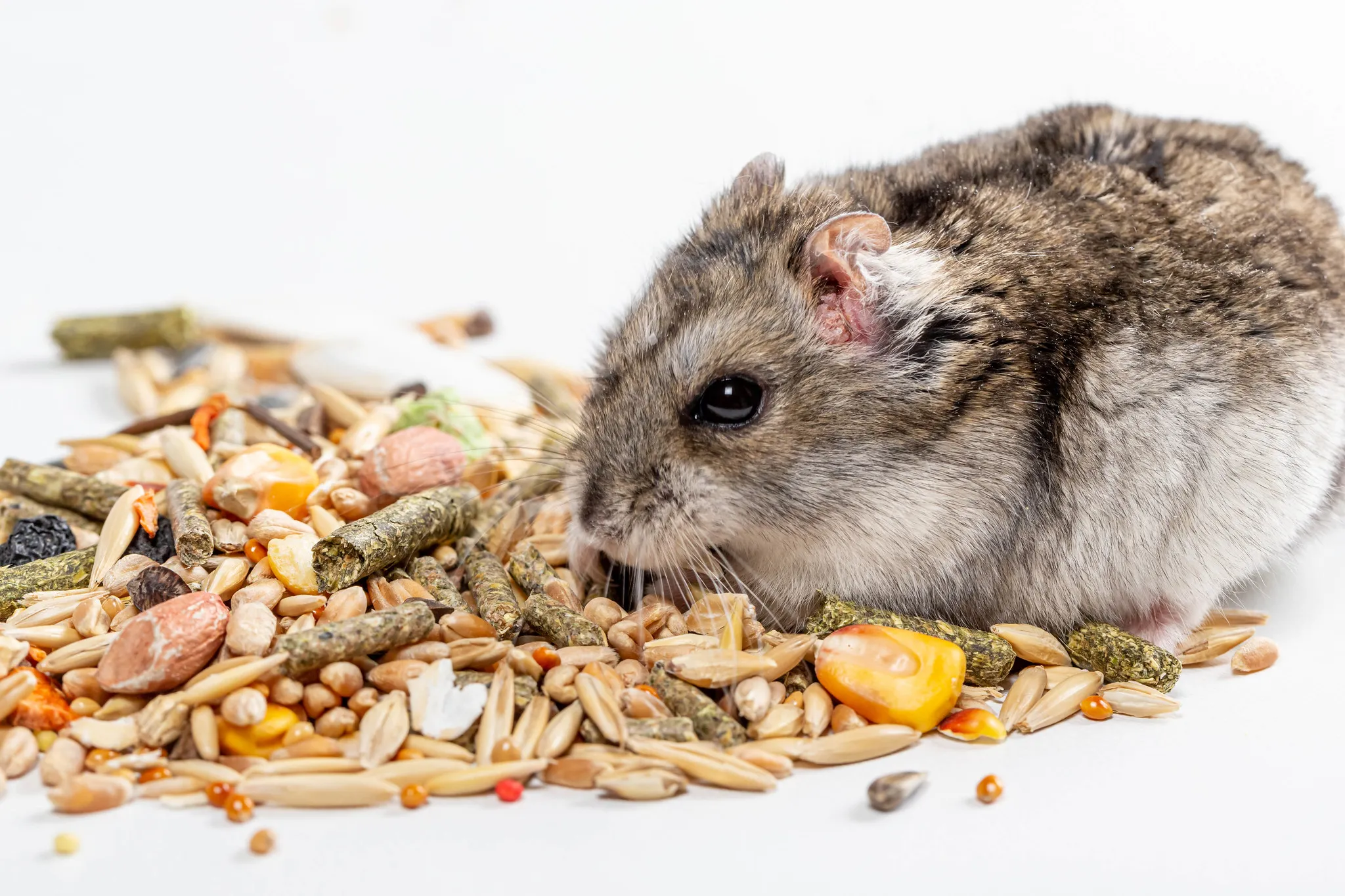
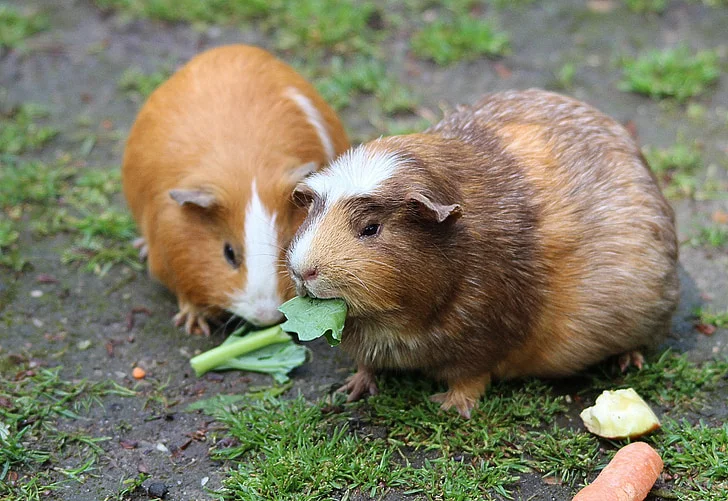
Gerbil:
Omnivorous, consuming a mix of seeds, insects, and vegetation.
Hamster:
Omnivorous, with a diet consisting of seeds, grains, and insects.
Guinea Pig:
Herbivorous, primarily grazing on grasses and vegetables.
Comparison:
Gerbils and hamsters share an omnivorous diet with some variations.
Guinea Pigs have a specialized herbivorous diet.
Ecological Implications:
Feeding habits influence resource utilization and impact local vegetation.
Dietary differences contribute to niche separation and competition among species.
16. Intelligence:
Gerbil:
Display problem-solving abilities, quick learning.
Hamster:
Limited problem-solving, more instinct-driven.
Guinea Pig:
Socially intelligent, able to learn from interactions.
Comparison:
Intelligence varies, with gerbils often showing more cognitive flexibility.
Guinea Pigs demonstrate social intelligence, while hamsters rely more on instincts.
Ecological Implications:
Cognitive abilities affect foraging strategies and adaptation to environmental changes.
Differences in intelligence contribute to niche specialization and survival strategies.
17. Social Behavior:
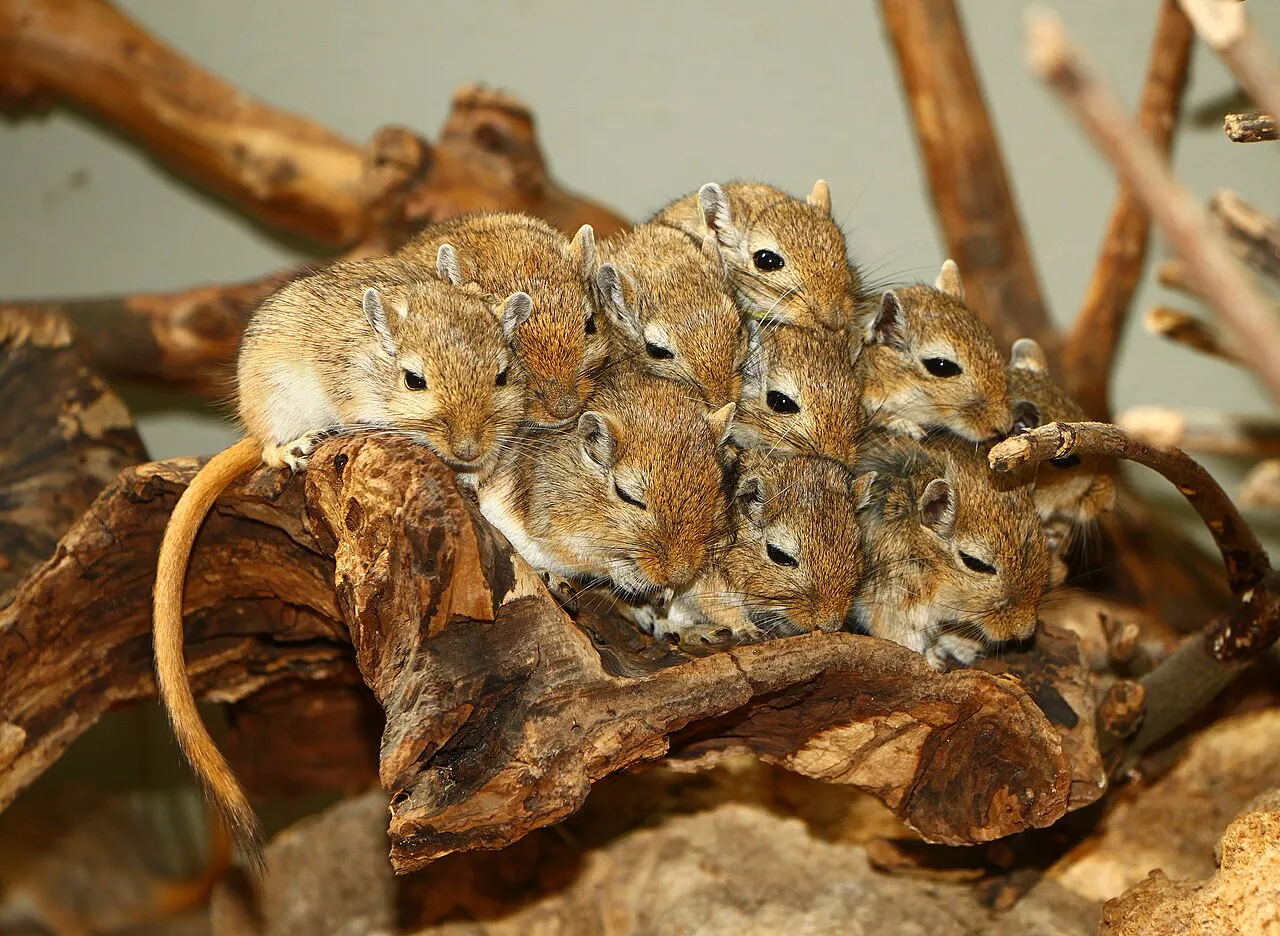
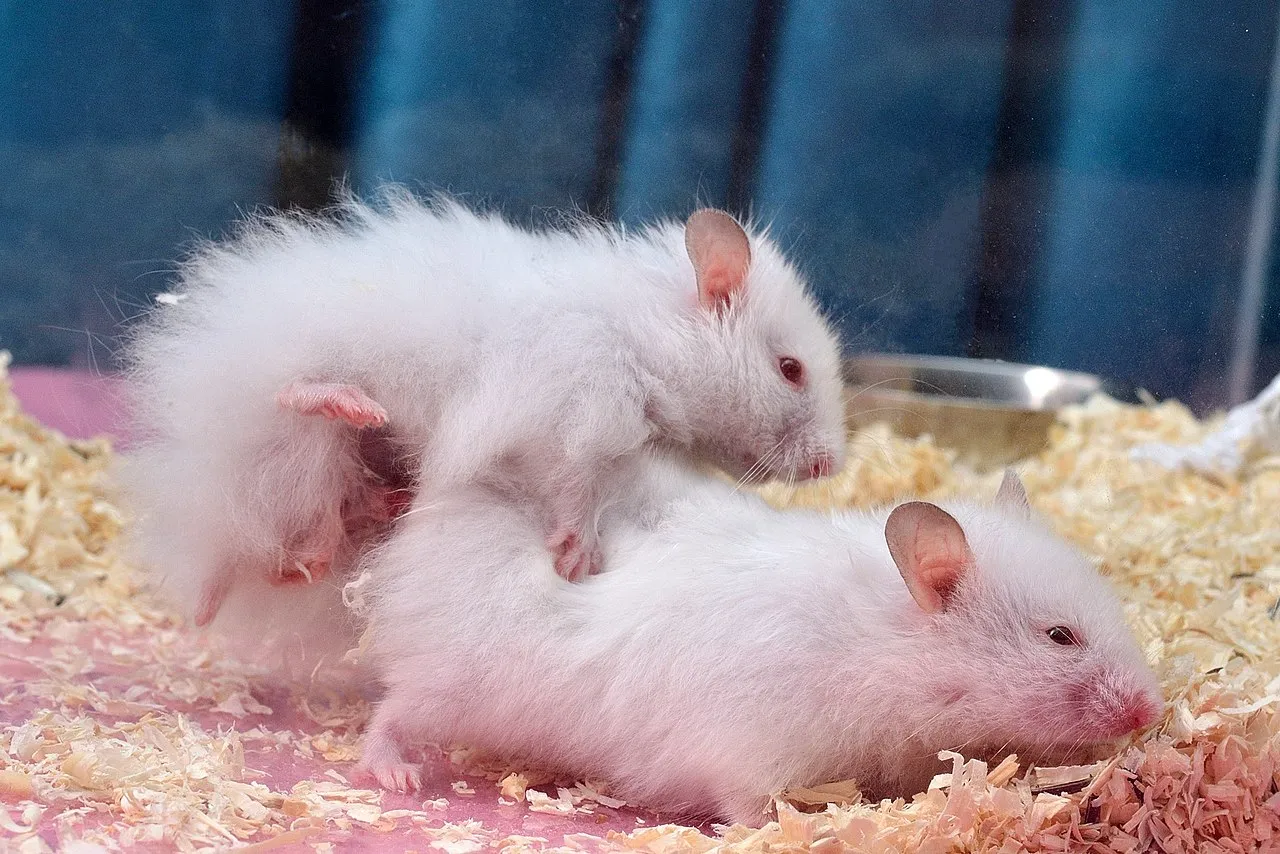
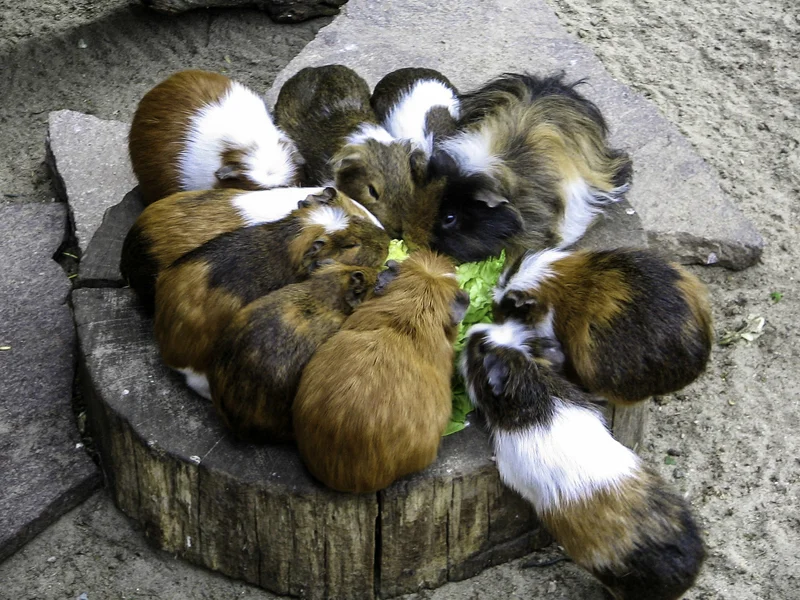
Gerbil:
Social animals, prefer living in groups.
Hamster:
Mostly solitary, territorial behavior.
Guinea Pig:
Highly social, thrive in pairs or groups.
Comparison:
Gerbils and Guinea Pigs are social animals with varying degrees of sociality.
Hamsters typically prefer solitary living.
Ecological Implications:
Social behavior influences habitat selection, communication, and cooperation within the ecosystem.
Differences contribute to the ecological roles each species plays in their respective environments.
18. Mode of Reproduction:
Gerbil:
Polyestrous with a short gestation period, producing litters.
Hamster:
Seasonal breeders, with shorter gestation periods.
Guinea Pig:
Continuous breeders with a longer gestation period.
Comparison:
Gerbils and hamsters show adaptations to reproduce quickly.
Guinea Pigs have a slower reproductive strategy with continuous breeding.
Ecological Implications:
Reproductive strategies impact population dynamics and adaptation to environmental changes.
Differences contribute to the overall reproductive ecology of each species.
19. Parental Behavior:
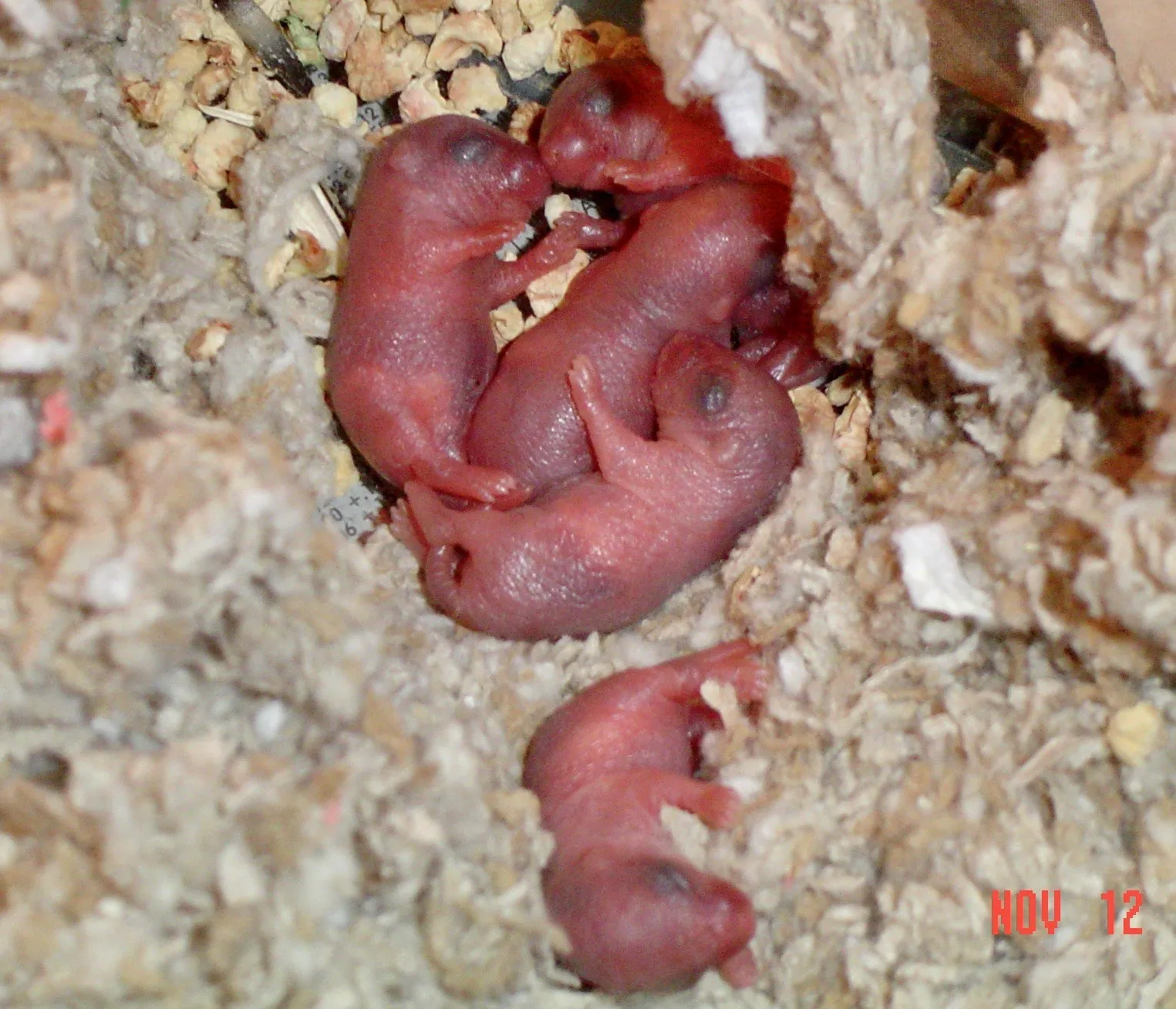
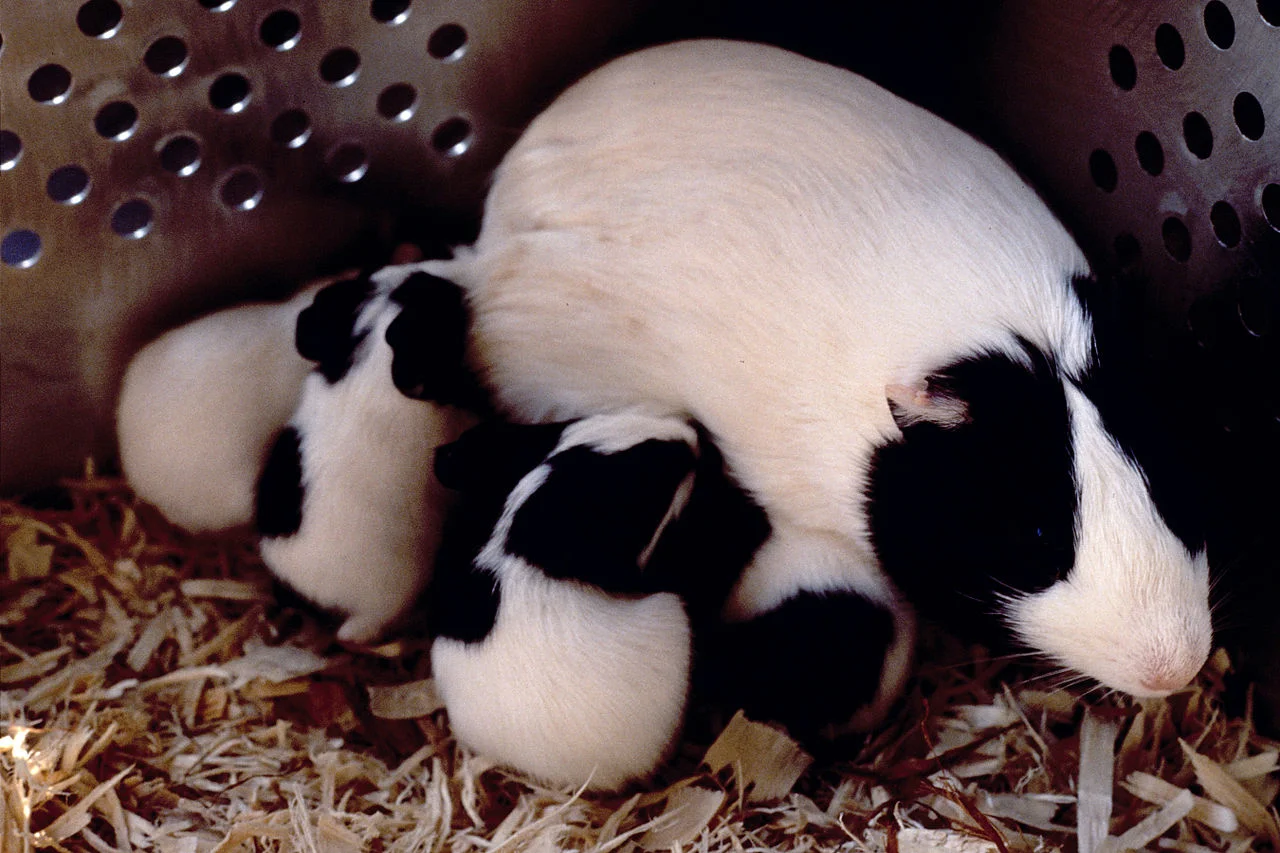
Gerbil:
Both parents contribute to caring for and protecting the offspring.
Hamster:
Mothers are primarily responsible for caring for the young.
Guinea Pig:
Both parents are involved in nurturing the offspring.
Comparison:
Parental roles vary, with gerbils exhibiting more shared responsibilities.
Guinea Pigs also involve both parents in the care of their young.
Ecological Implications:
Parental behaviors influence the survival and development of the offspring.
Differences contribute to the species’ adaptation to specific ecological challenges.
20. Proximity to Human-Inhabited Areas:
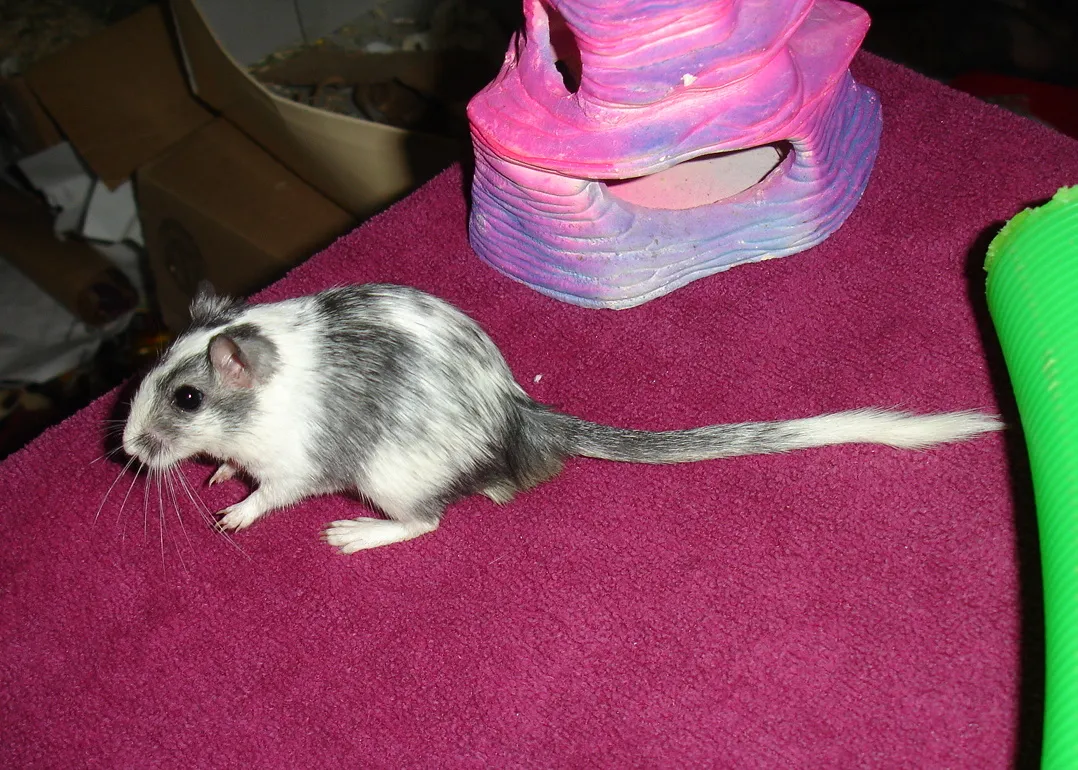
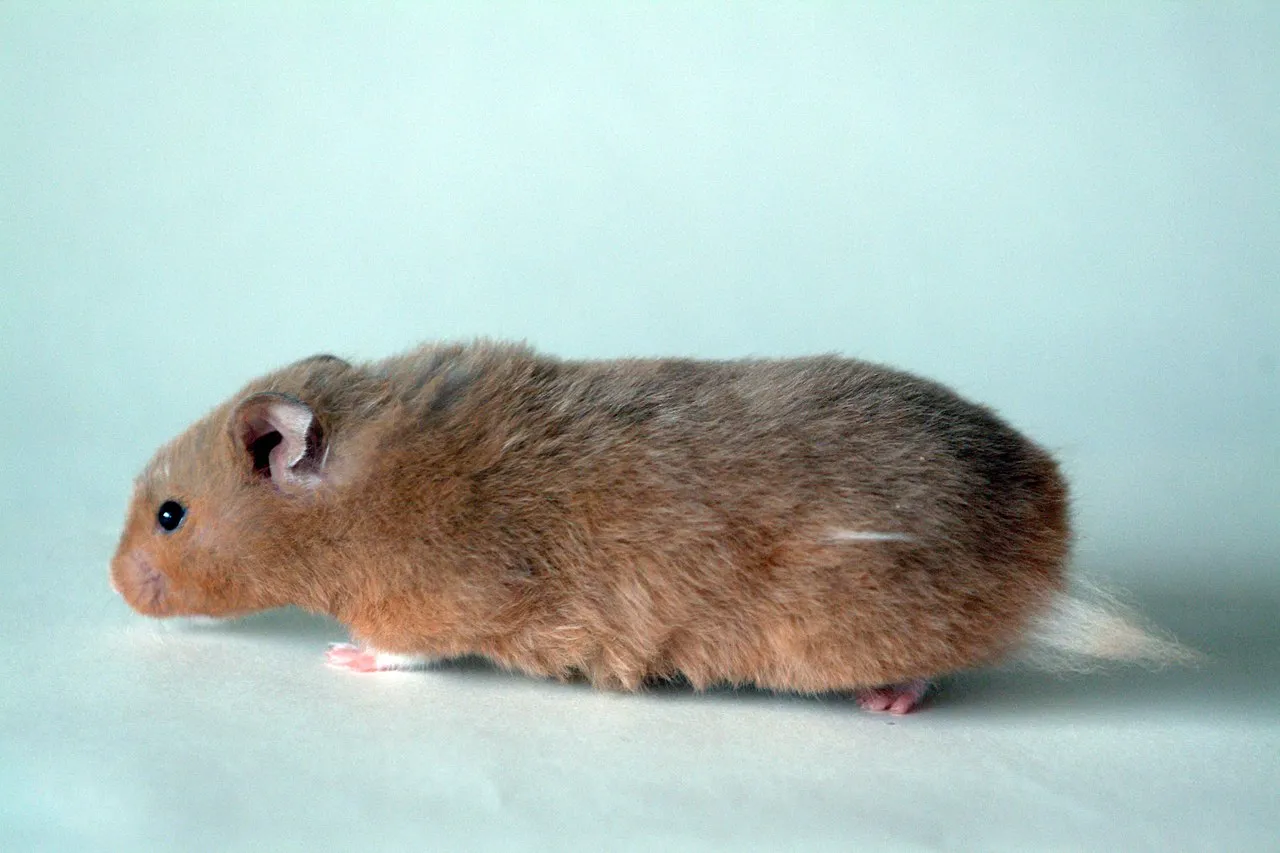
Gerbil:
Can adapt to living in proximity to human settlements.
Hamster:
May inhabit areas near agricultural lands and human habitats.
Guinea Pig:
Domesticated as pets, often found in households.
Comparison:
Gerbils and hamsters can be found in both wild and semi-urban environments.
Guinea Pigs are commonly kept as pets in close association with humans.
Ecological Implications:
Adaptability to human-inhabited areas influences the likelihood of interaction and potential conflicts.
Differences reflect the species’ ability to coexist or thrive in anthropogenic environments.
21. Behavior Toward Humans:
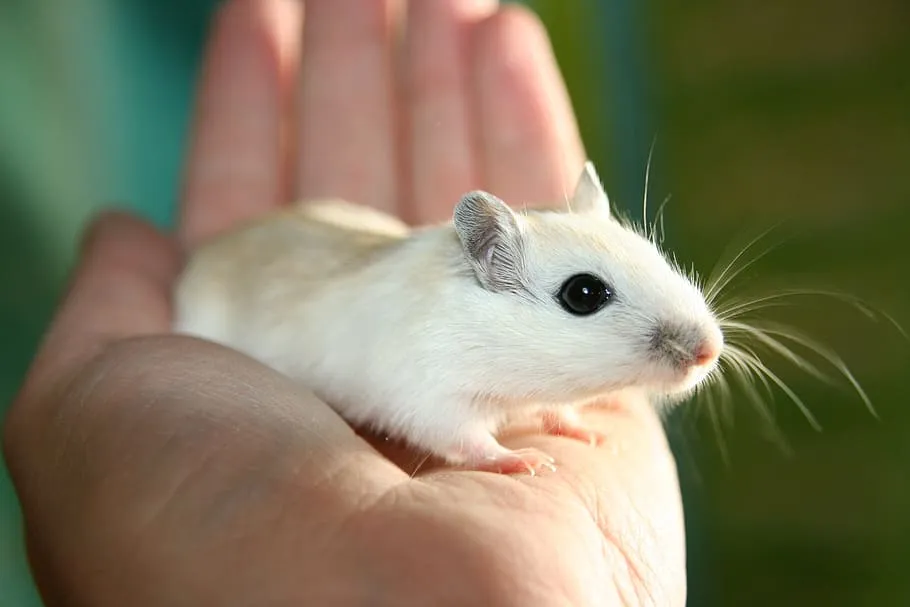
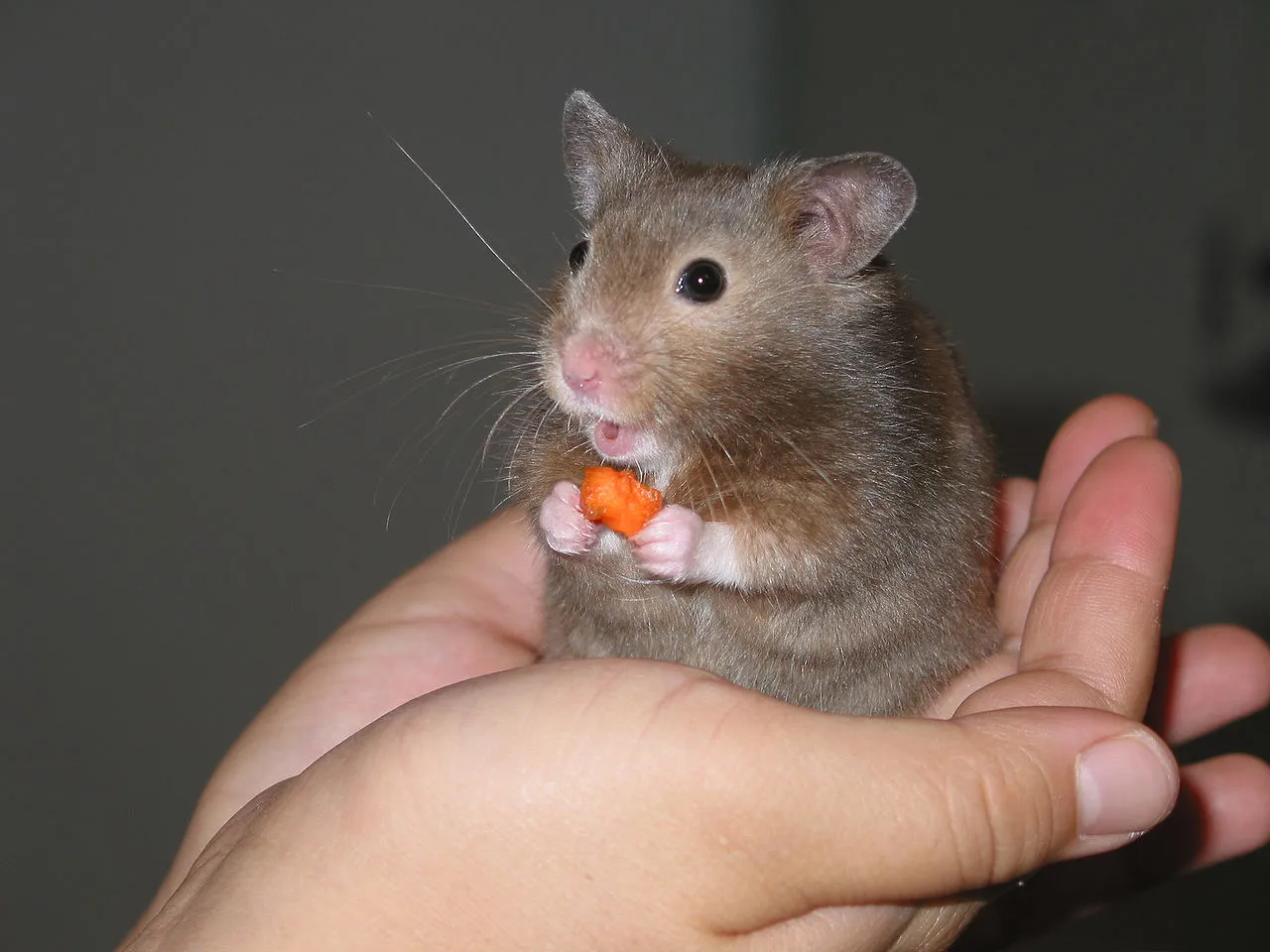
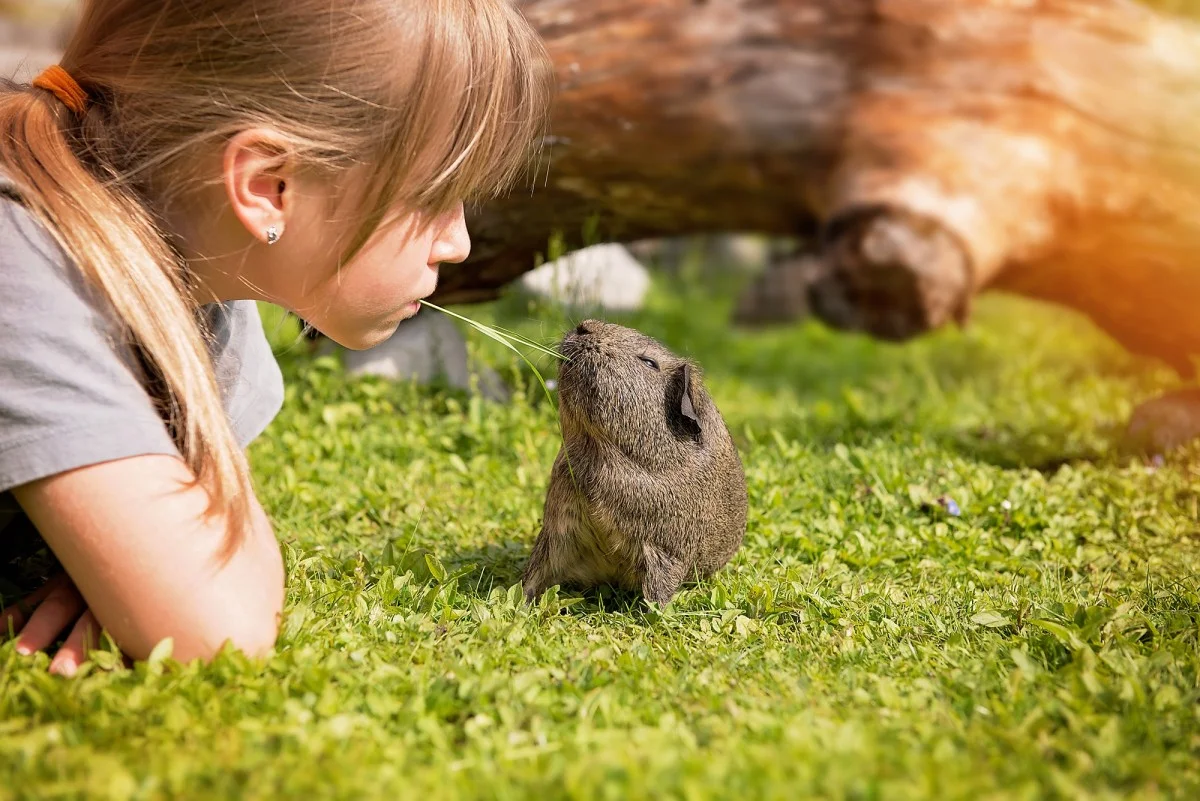
Gerbil:
May display curiosity but can be skittish.
Hamster:
Varied, some tolerate handling, while others may be more territorial.
Guinea Pig:
Generally social and comfortable with gentle handling.
Comparison:
Behavioral responses vary, influenced by domestication status and individual temperament.
Guinea Pigs are often more amenable to human interaction compared to gerbils and hamsters.
Ecological Implications:
Interactions with humans may impact the species’ survival and well-being.
Differences in behavior contribute to the suitability of each species as a pet or in research settings.
22. Danger Posed to Humans:
Gerbil:
Generally not dangerous, may nip if threatened.
Hamster:
Can bite if provoked, usually not severe.
Guinea Pig:
Rarely bites, typically gentle in nature.
Comparison:
Gerbils, hamsters, and guinea pigs pose minimal danger to humans.
Bites are usually defensive and not severe.
Ecological Implications:
Limited danger to humans contributes to the suitability of these species as pets.
23. Associated Precautions:
Gerbil:
Gentle handling, avoiding sudden movements.
Hamster:
Caution when reaching into cages to prevent bites.
Guinea Pig:
Regular health checks, proper handling to prevent stress.
Comparison:
Precautions focus on minimizing stress and avoiding potential bites.
Each species may have specific recommendations for safe interactions.
Ecological Implications:
Understanding and respecting precautions contribute to the well-being of captive and wild populations.
24. Conservation Status:
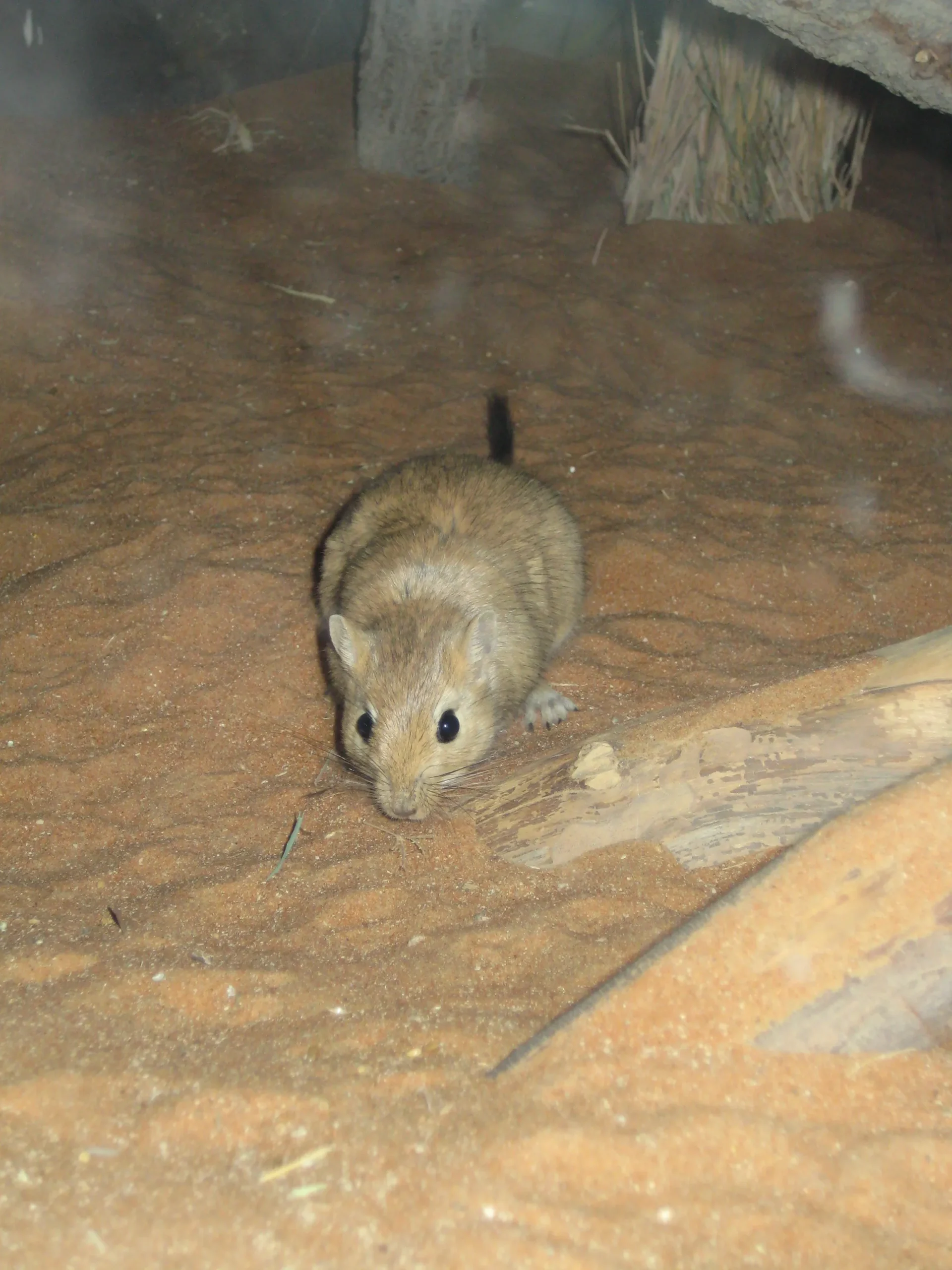
Gerbil:
Generally not a conservation concern, some species may face local threats.
Hamster:
Some species are considered threatened due to habitat loss.
Guinea Pig:
Domesticated varieties common, wild populations stable.
Comparison:
Conservation status varies among species within each group.
Domestication may influence the conservation outlook for certain varieties.
Ecological Implications:
Conservation considerations differ based on the species’ ecological roles and anthropogenic impacts.
*Summary of Comparison
Taxonomy:
Gerbil: Rodentia, Muridae, Gerbillinae
Hamster: Rodentia, Cricetidae, Cricetinae
Guinea Pig: Rodentia, Caviidae, Caviinae
Appearance:
Gerbil: Sleek, slender with a long tail.
Hamster: Compact, stout body with a short tail.
Guinea Pig: Larger, stocky body, short legs.
Size:
Gerbil: 6-12 inches
Hamster: 2-7 inches
Guinea Pig: 8-10 inches tall
Weight:
Gerbil: 60-130 grams
Hamster: 20-150 grams
Guinea Pig: 700-1200 grams
Dentition and Bite Force (PSI):
Gerbil: Moderate bite force, incisors for gnawing.
Hamster: Strong bite, adapted for burrowing.
Guinea Pig: Large incisors, herbivorous bite force.
Physical Offensive Advantages:
Gerbil: Speed and agility.
Hamster: Strong bite and burrowing ability.
Guinea Pig: Size may provide defensive advantage.
Physical Defensive Advantages:
Gerbil: Burrowing and agility.
Hamster: Burrowing, defensive aggression.
Guinea Pig: Vocalizations and hiding.
Speed:
Gerbil: Up to 10 mph.
Hamster: 4-8 mph.
Guinea Pig: Below 5 mph.
Agility:
Gerbil: Highly agile, sharp turns.
Hamster: Agile, especially in burrows.
Guinea Pig: Moderate agility.
Senses:
Gerbil: Well-developed hearing, smell, good vision.
Hamster: Sensitive hearing, poor eyesight, keen smell.
Guinea Pig: Excellent hearing, smell, average eyesight.
Overall Physical Capacity:
Gerbil: Balanced physical abilities, speed, agility.
Hamster: Specialized for burrowing, strong bite.
Guinea Pig: Robust build, moderate speed, agility.
Habitat Preference(s) and Geographic Region:
Gerbil: Arid and semi-arid regions.
Hamster: Varied habitats, grasslands.
Guinea Pig: South American grasslands.
Tracks:
Gerbil: Distinct tracks with hop and drag marks.
Hamster: Tracks with tail drags, reflecting burrowing.
Guinea Pig: Hoof-like prints.
Lifespan:
Gerbil: 2-4 years.
Hamster: 2-3 years.
Guinea Pig: 5-7 years.
Mode of Feeding:
Gerbil: Omnivorous.
Hamster: Omnivorous.
Guinea Pig: Herbivorous.
Intelligence:
Gerbil: Problem-solving, quick learning.
Hamster: Limited problem-solving, instinct-driven.
Guinea Pig: Socially intelligent.
Social Behavior:
Gerbil: Social, prefer living in groups.
Hamster: Mostly solitary, territorial.
Guinea Pig: Highly social, thrive in pairs/groups.
Mode of Reproduction:
Gerbil: Polyestrous, short gestation, litters.
Hamster: Seasonal breeders, shorter gestation.
Guinea Pig: Continuous breeders, longer gestation.
Parental Behavior:
Gerbil: Both parents care for offspring.
Hamster: Mothers primarily care for young.
Guinea Pig: Both parents involved in nurturing.
Proximity to Human-Inhabited Areas:
Gerbil: Adaptable to human settlements.
Hamster: May inhabit areas near agriculture.
Guinea Pig: Domesticated, found in households.
Behavior Toward Humans:
Gerbil: Curious but skittish.
Hamster: Varied, some tolerate handling.
Guinea Pig: Generally social and comfortable.
Danger Posed to Humans:
Minimal danger, potential for bites if provoked.
Associated Precautions:
Gentle handling, avoiding sudden movements.
Conservation Status:
Varies, with some hamster species considered threatened.
Conclusion
I. Similarities:
All are rodents belonging to the order Rodentia.
Display adaptations for survival, such as burrowing and omnivorous diets.
II. Differences:
Varying sizes, with guinea pigs being larger than gerbils and hamsters.
Diverse reproductive strategies, from continuous breeding in guinea pigs to seasonal breeding in hamsters.
Social behaviors ranging from solitary hamsters to social gerbils and guinea pigs.
Ecological niches, with gerbils adapting to arid regions, hamsters in varied habitats, and guinea pigs in South American grasslands.
Overall Implications:
These distinctions highlight the ecological diversity and adaptation strategies of gerbils, hamsters, and guinea pigs in their respective habitats. Understanding their unique characteristics is crucial for conservation, pet care, and research purposes.

